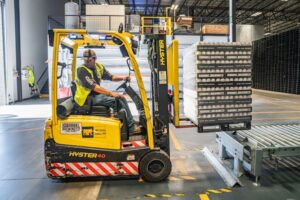Artificial intelligence is one of the most disruptive technologies the world has seen. It’s everywhere today, from cultivating your recommended videos to helping companies make strategic business decisions. One of its most exciting applications is transportation.
The transportation AI market could grow to $3.5 billion by 2023, more than double what it was in 2017. Perhaps more surprisingly, AI is already a common part of people’s daily commutes. This technology doesn’t just hold potential for the future but is already shaping transportation.
Here’s a closer look at how AI has influenced transport today and where it could go from here.
Self-Driving Functions
When most people think of AI and vehicles, their minds probably go to autonomous driving.
“Self-driving cars wouldn’t be possible without machine vision and other AI algorithms to help them recognize objects and navigate potentially risky roads.”
Since driving involves so many factors and split-second decisions, these AI models are some of the most advanced out there.
As driverless vehicles populate the world’s roads, transportation will become safer and more efficient. Machines can’t get distracted or intoxicated, so self-driving cars could bring road accidents down to just eight per year by 2040. They could also reduce fuel consumption by 10% annually by adapting to changing factors that affect mileage.
While most talk about driverless vehicles today revolves around cars and trucks, they could apply in other situations, too. Boats and aeroplanes, which go through less traffic and take longer, often more direct routes, may even be better-suited to autonomous driving.
Self-driving functions may seem like something out of the future, but some are already commonplace. New cars like the Mustang Mach-E have lane-keep assist features and automated emergency braking, which fill the gaps where human drivers make mistakes.
In Summary: AI helps drivers avoid crashes today and will automate driving entirely in the future.
AI and Electric Vehicles
AI is also influencing another popular transportation trend: electric vehicles (EVs). If EVs are going to be a viable replacement for fossil fuel vehicles, they need to be convenient. Limited ranges can hinder that, turning drivers away, but AI can help.
Did You Know: Car companies today use AI to make more accurate predictions about electric car ranges.
While EVs today have an impressive median range of 250 miles, various factors, especially driving behavior, can change that. Ford found a solution by using AI to adjust range predictions in real-time. The Mach-E analyzes how fast drivers like to go, the weather, and data from other vehicles to provide more accurate range predictions.
In the future, this concept could go further. AI could adjust various factors in an EV according to drivers’ habits to maximize its range. AI could also help carmakers design more efficient and affordable batteries by simulating various options.
AI Navigation
Did You Know: AI is already a crucial part of navigation for shipping companies, and it could make GPS apps even more helpful in the future.
One of the more recognizable appearances of AI in transportation today is navigation. AI models in GPS systems help find the fastest or most fuel-efficient route, saving drivers time and money. Logistics companies have latched on to this technology, with UPS saving 100 million miles a year thanks to its AI routing system.
AI is ideal for navigation because it can quickly account for so many different influencing factors. Transportation sectors like shipping and air travel, where dynamic weather is a bigger concern, could become far safer and more efficient with these tools.
AI navigation could soon move past map-based routing, too. Google’s DeepMind AI is already learning to navigate without maps, using visual cues and landmarks to determine its position instead. Systems like this could help guide drivers through unfamiliar environments, like when road closures make maps inaccurate.
Intelligent Traffic Management
In the future, AI could go beyond helping people navigate traffic and influence traffic itself. As smart city infrastructure grows, roadways will have a wealth of real-time data. AI could take this data and adjust things like traffic lights and lane openings accordingly to reduce traffic.
AI could gather data from connected vehicles and infrastructure to see where traffic is increasing or likely to increase. It could then change lights, open or close lanes, and adjust navigation systems’ routes to alleviate congestion. This technology could also detect illegal behaviour that may cause traffic and report it, helping crackdown on unsafe driving habits.
These systems are already in use in 23 cities across Asia. AI traffic management brought Hangzhou, which once ranked as the fifth most congested city in China, down to the 57th most congested city. As more cities implement similar systems, traffic jams and accidents could become a thing of the past.
“AI could use traffic data to alleviate congestion and prevent accidents, and it’s already starting to do so.”
AI Is Revolutionizing Transportation
Whether people realize it or not, AI has changed transportation. It’s already guiding cars, streamlining shipping routes, eliminating traffic jams, and keeping roads safe. As this technology improves, its impact will only grow. AI is more than just a nice thing to have in vehicles. Before long, it will redefine them.










